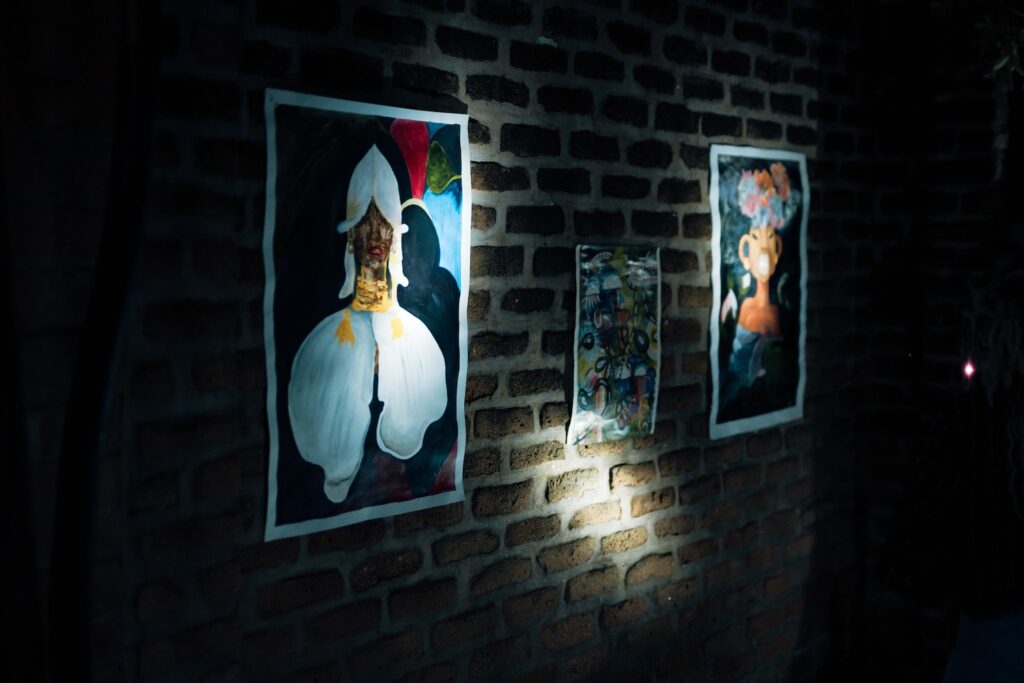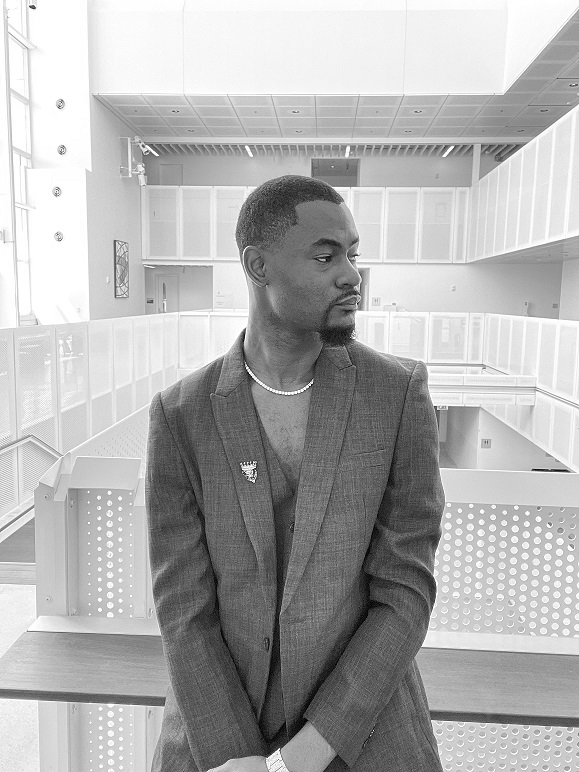Mirriam Francesca Nkosi is among the five recipients of the inaugural Open Country Mag Curatorial Fellowship, sponsored by Africa No Filter. Her proposal was Luba, a musical, art, and photography exhibition on indigenous flowers in Malawi. The initiative supported Luba with $1,400 and mentorship by Open Country Mag editor Otosirieze, Lumen Prize winning artist Minne Atairu, and A Nasty Boy founder Innanoshe Akuson.
Nkosi is a singer, songwriter, and sonic storyteller from Malawi. In 2020, she won an online music cover competition hosted by Mr. Eazi and George Kalukusha, and recorded her debut single “Come Back to Me.” After her second single “Yang’ana Mwamba,” she released her first body of work, Scattered but a Little Put Together, in 2021.
She has since held a residency at Modzi Arts in Lusaka, and performed on different stages across Malawi, at the Revitalise Feminist Festival organized by Pepeta Africa in 2022, and the Zamrock Museum showcase in Zambia. She has partnered with Pepeta Africa and Wona to speak to issues affecting young people through a YouTube series and a collaborative EP.


What is Luba?
Luba, at its core, is an invitation to reconnect with nature as an integral part of our collective African heritage. This concept was expressed profoundly in the “Blooms of Heritage” exhibition. Curated through extensive research, the exhibition featured five artists from various disciplines — visual arts, textile arts, photography, poetry, and sound arts. Each artist created works inspired by Malawi’s indigenous and native flowering plants. The exhibition focused on preserving, celebrating, and documenting these native plants and the traditional knowledge associated with them.
Simultaneously, it provided a platform for artists to explore and express their personal connections to these indigenous plants and trees while also inviting the audience to understand the intricate relationship that Malawians have with nature. Through Luba, we aim to celebrate and preserve our botanical heritage while fostering a deeper connection between individuals and nature.
When did you have your first idea for Luba, and how did it develop?
It was bubbling within me for a long time, driven by an inherited love for nature that was searching for something to be rooted in. I had gone to the northern part of Malawi, where I encountered an incredible array of wildflowers I had never seen before. It piqued my interest, sparking questions about other indigenous wildflowers I might not know of.
The main concept took shape during my artist residency at Modzi Arts in Lusaka, Zambia, in May 2023. I was fortunate to be surrounded by people knowledgeable about indigenous plants, and it inspired me to explore and connect with Malawi’s botanical heritage. With me feeling out of touch, Luba emerged as a way to channel my cultural curiosity. It is an invitation to celebrate and preserve our unique flora and the cultural knowledge entwined with it.
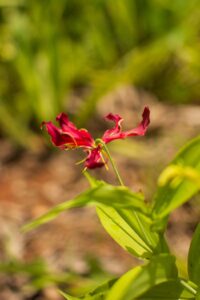
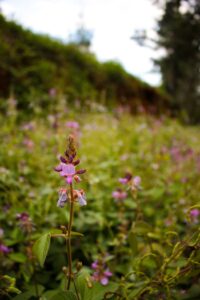
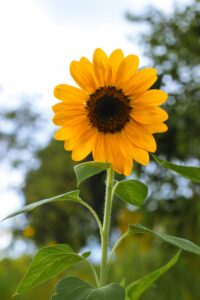
Which aspects of Luba were easy?
One of the easier aspects was envisioning the myriad beautiful ways these plants and flowers could be immortalized through art. The natural beauty and cultural significance of Malawi’s flora provided abundant inspiration. Additionally, inviting the exhibiting artists was a straightforward process, as I selected them based on their evident love for nature and their exceptional artistic prowess. Their shared passion for the project made collaboration smooth and creatively fulfilling.
Which aspects were hard?
Given some of the gaps I found in my research, finding a consistent overarching story to guide the artists and exhibition was the main challenge. At the exact same time, throughout my curatorial research, I also experienced a constant shift in perspective, because there were so many angles and nuances to connect with.
What gap does Luba fill in curation and culture?
Luba fills critical gaps in both curation and culture by integrating community engagement with the preservation of indigenous knowledge. In curation, Luba emphasizes a collaborative and personal approach, working closely with artists to connect their creative expressions with deep, research-based insights into Malawi’s botanical heritage. This method fosters a communal sense of artistry and kinship, creating exhibitions that are not only visually compelling but also meaningful.
Culturally, Luba addresses the urgent need for the documentation and preservation of native plants and traditional knowledge. In a time when much indigenous wisdom risks being forgotten, Luba offers a platform for older generations to share their memories and for younger generations to learn and reflect on their heritage. By doing so, it bridges generational gaps and fosters a deeper appreciation and understanding of Malawi’s unique botanical legacy.
Additionally, Luba contributes to filling gaps in representation and diversity by highlighting marginalized perspectives within indigenous knowledge and botanical heritage. It fosters interdisciplinary collaboration between artists, scientists, historians, and community elders, enriching both the curatorial process and cultural narratives. Through digital documentation and accessibility efforts, Luba ensures that its exhibitions and research findings are globally accessible, promoting broader appreciation and knowledge of Malawi’s botanical heritage.
What is the future of Luba after the Fellowship?
Beyond the fellowship, I hope for Luba to become a prominent hub for ethnobotany, fostering dialogue through art, research, and community events. We aspire to deepen our commitment to preserving and celebrating Malawi’s botanical heritage by expanding our exhibitions, research initiatives, and community engagement efforts. By cultivating partnerships and leveraging digital platforms, Luba will continue to invite us all into reconnecting with nature.
Luba will also advocate for environmental conservation and sustainable practices linked to indigenous flora. Our goal is to establish it as a sustainable platform that enriches cultural understanding, promotes and nurtures Malawian art, and inspires future generations to cherish and protect their natural heritage.
What are the most important skills that you picked up during the Fellowship?
During the Fellowship, I really enjoyed learning the art of storytelling. It allowed me to grow my research skills as well as introduced other aspects of curation and digital storytelling that I wasn’t aware of.
Ultimately, this Fellowship challenged me, and one of the biggest things I learned was to trust my creative instincts. All of these skills were crucial in digging deep into indigenous botanical heritage, rallying diverse groups together, keeping the project on budget, throwing a successful community event, and sharing our journey effectively through visuals and stories. They’re the backbone of how Luba aims to operate and grow, ensuring that we make a meaningful impact in preserving Malawi’s rich cultural and natural legacy. I am grateful that the Fellowship facilitated this. ♦
If you love what you just read, please consider making a PayPal donation to enable us to publish more like it.
Other Projects of the Open Country Mag Curatorial Fellowship, Sponsored by Africa No Filter
— Presenting Among Us, Scans of Ancient Nok Art for an AR-scape
— Presenting It’s Bloom Time, a 3-D Fashion Story Collection
— Presenting One Foot in the Closet, a Podcast for Beyond-the-Binary Africans

